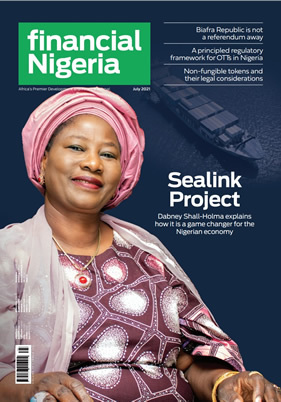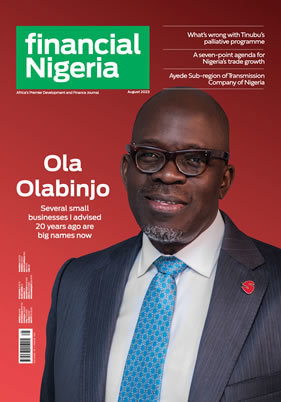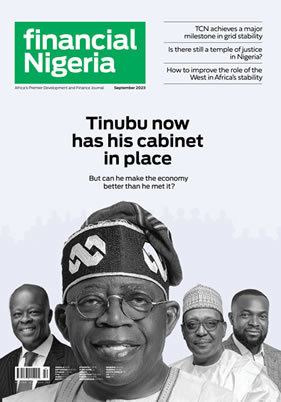
Akachi Ngwu, Author, Entrepreneur
Subjects of Interest
- Communications
- Entreprenuership
- Public Relations
Outlook of OOH advertising in Nigeria 20 Dec 2018
At the end of every year is time for stock-taking. Making assessments helps in planning and taking business decisions for enhanced service delivery and organisational growth. Earlier this year, I had a favourable outlook for 2018, especially for practitioners of the out-of-home (OOH) advertising industry who are well-positioned and prepared to take advantage of the opportunities the year was expected to present.
For instance, there was going to be the FIFA World Cup 2018, heightened political campaigns, increased adoption of technology, among others. While all these have taken place, this article is forward-looking, and seeks to explore more robust service delivery for the OOH industry in 2019 and beyond.
Practitioners in the OOH have a responsibility to drive changes in value chain of the industry and engender international best practices. Among the practices that need to change is this author's desire to see an optimization in outdoor site planning by migrating from site lists to site description and analytics in marketing site locations to clients.
Traditional site lists, which simply means the listing of the locations of outdoor hoardings or billboards, has been the mainstay for as long as the outdoor advertising industry has existed in Nigeria. This has been the practice of over 140 organisations who provide billboards and hoardings across the country. But global advertising agencies that have recently entered the Nigerian market are changing this practice. And with advancements in technology, practitioners must reposition the outdoor advertising channels as strategic marketing communication tools.
A new practice of site description in selling OOH services entails the use of the advertising concept of DOG (demography, orientation and geography). The Outdoor Advertising Association of America refers to DOG as the advertiser's best friend. DOG uses audience measurement technology to drive strong call to action (CTA) and higher return on investment (ROI).
A good knowledge of the concept also facilitates decision-making for both practitioners and advertisers. For instance, knowing the age, gender, income, occupation, consumer profiles, vehicle and traffic count, and other location statistics would determine whether a billboard for a particular brand or campaign would be mistargeted if placed along a particular thoroughfare. Marketing campaigns involve huge budget outlay on the part of the advertisers so it would be very professional for the service providers to offer services that enable their clients to achieve their campaign objectives.
One of the players positioned to drive change in the OOH industry in Nigeria is JCDecaux Grace Lake, the partnership between JCDecaux, the Paris-based global leader in outdoor advertising, which recently entered the local OOH market, and Grace Lake Partners (GLP), an indigenous investment and advisory firm. JCDecaux is one of the global media agencies that have developed proprietary measurement tools, which provide analytics on consumer behaviour and performance of OOH campaigns.
One of JCDecaux Grace Lake's much-publicised public service campaigns is the Lagos Traffic Information System, also called LATIS. It is smart traffic advisory system, which provides real-time traffic and other relevant information to commuters across major roads in the metropolis. The LATIS also provides information such as time and weather forecast.
Beyond the call to optimise outdoor site planning, the current business practice of arbitrary rate fixing will soon give way to a more robust price mechanism based on data. This is important in properly pricing outdoor advertising services with the use of consumer demographic data. It is left to be seen how leveraging data on consumer behaviour and buying patterns will help achieve highly-targeted campaigns for advertisers, thereby driving CTA and ROI.
There are other unsavoury practices in the industry that need to end in 2019 as the industry raises professional standards. More still needs to be done to get the industry attain operational best practices across the value chain. For instance, the consummation of a commercial transaction is expected to be followed with prompt payment for service delivered but unfortunately this is not the situation that OOH practitioners face in Nigeria.
Delayed payments are quite par for the course. Sometimes payments for services rendered could be delay for more than twelve months after execution. The situation is almost impeding the business continuity of some services providers. The industry regulator can play a big role in addressing these issues. The Advertising Practitioners Council of Nigeria (APCON) should put in place and look at appropriate ways to enforce corporate governance rules that will curtail unprofessional practices by owners of media agencies and for the growth of the industry.
There is also the need to sanitise the industry and address the longstanding issue of billboard cluttering. The Lagos State Signage and Advertising Agency (LASSAA) has made significant progress in bringing order in the outdoor advertising space. Here also, more needs to be done in Lagos and other cities across the country. In the meantime, my dream of a professionally-driven out-of-home advertising industry in Nigeria will continue into the future because I see light at the end of the tunnel. Here is wishing you all a wonderful holiday season ahead.
Latest Blogs By Akachi Ngwu
- Rising competition and sponsorship trends in Nigerian beer market
- What recent celebrity endorsements in Nigeria mean
- Sponsorships as effective brand communication tool for SMEs
- How design thinking drives brand marketing and engagement
- Utilising storytelling for effective marketing communication





